Permission Settings
Checklist templates with empty permissions
If your Jira admin decides to change the default access settings for Didit and your template has no permissions, you could lose access. Please work with the Jira admin to understand the implications of this setting.
Permissions for your checklists
Users can restrict Didit checklist templates and the checklists created from those templates. You can restrict access to templates and checklists based on group memberships and individual users. This feature aims to ensure that only the intended audience can access sensitive templates or checklists.
Permission alerts explained
If you are looking for a way to set permissions, please visit our how to page.
Existing checklists: Unaffected by new restriction changes
It’s important to note that any restriction will not affect already existing checklists derived from the template. This notification provides you with information on how many checklists users have already generated from this template. The new permission settings will not touch these existing checklists.
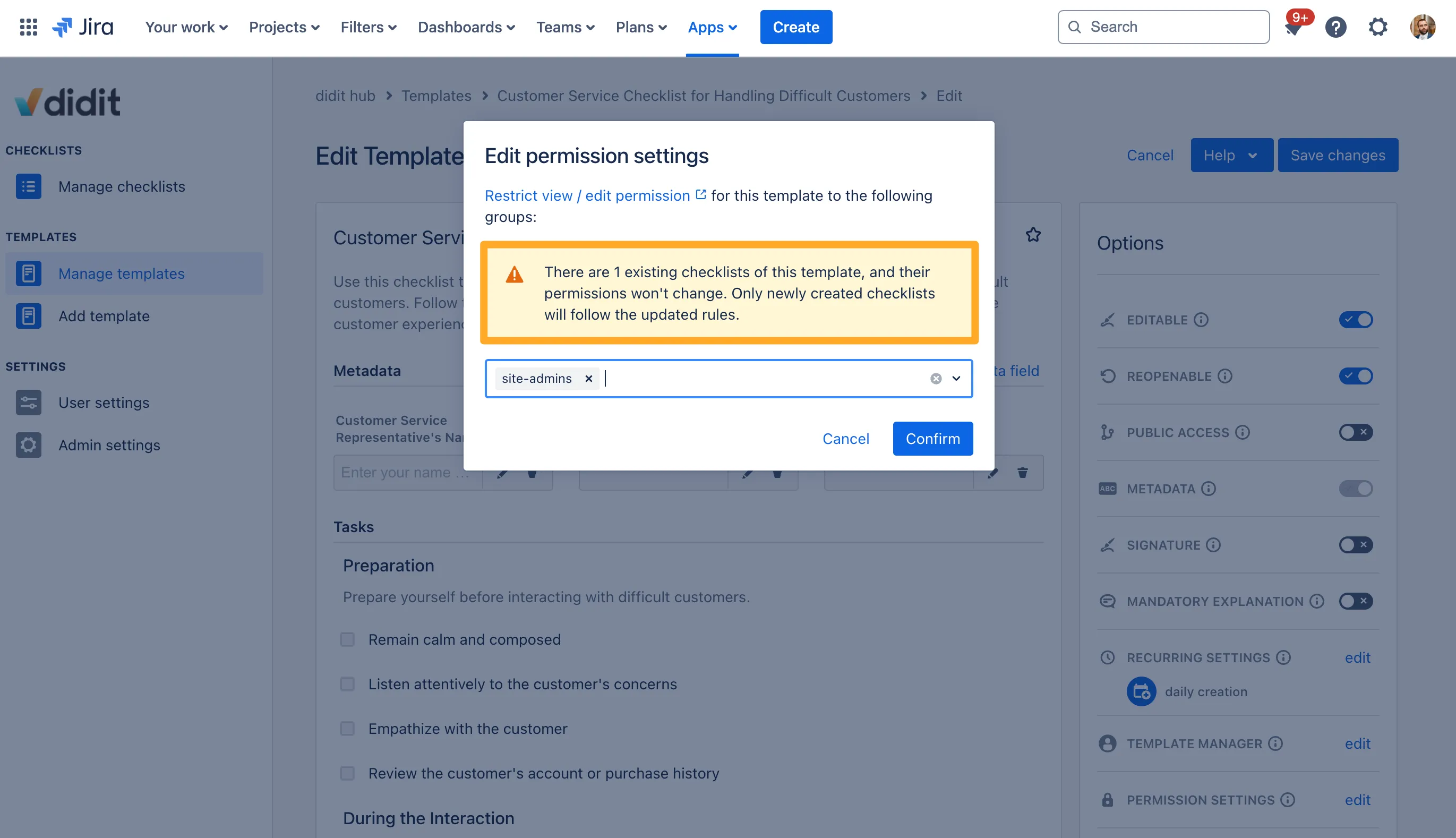
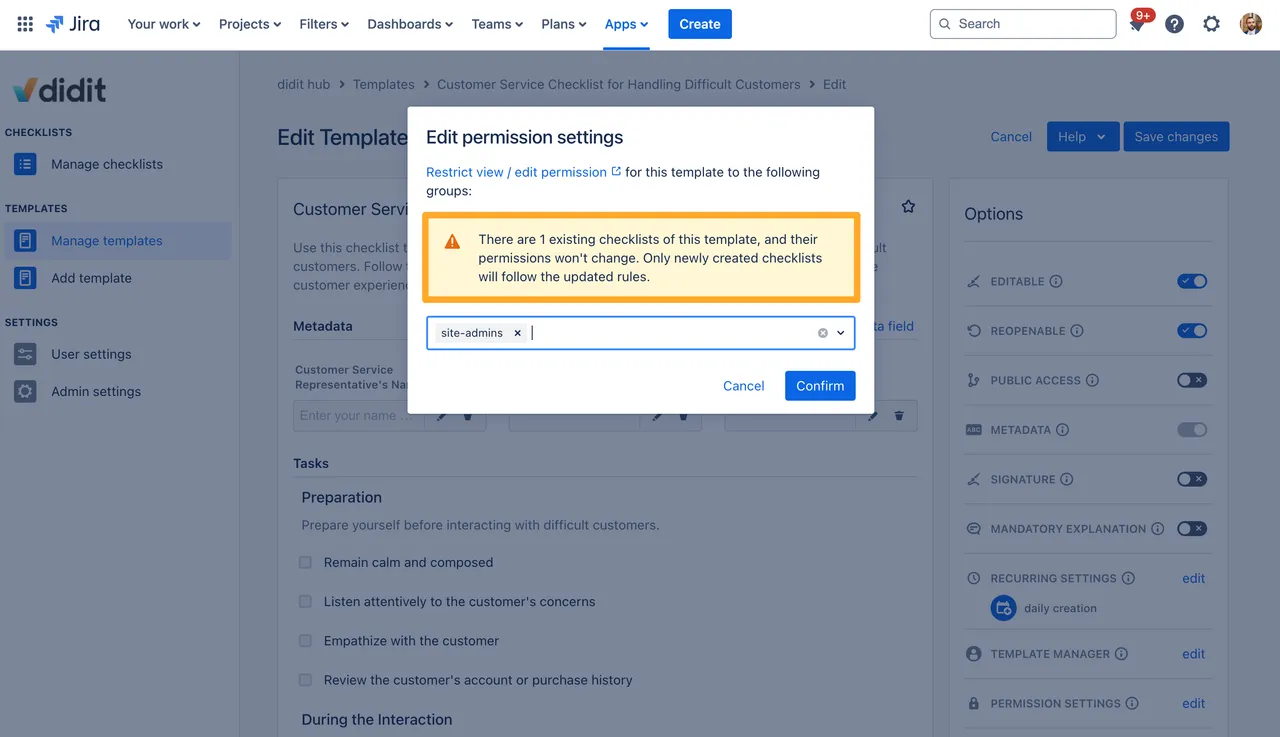
User group selection guidelines
You must belong to at least one chosen user group or added as an individual user to access the template and related checklists. If you save the template without being in any of the selected groups, you’ll lose access and won’t be able to see or use this template anymore. So, select user groups carefully and always review before saving the template. Locked yourself out by mistake? You can manage your group memberships in your Atlassian User Management Settings or ask your admin for help.
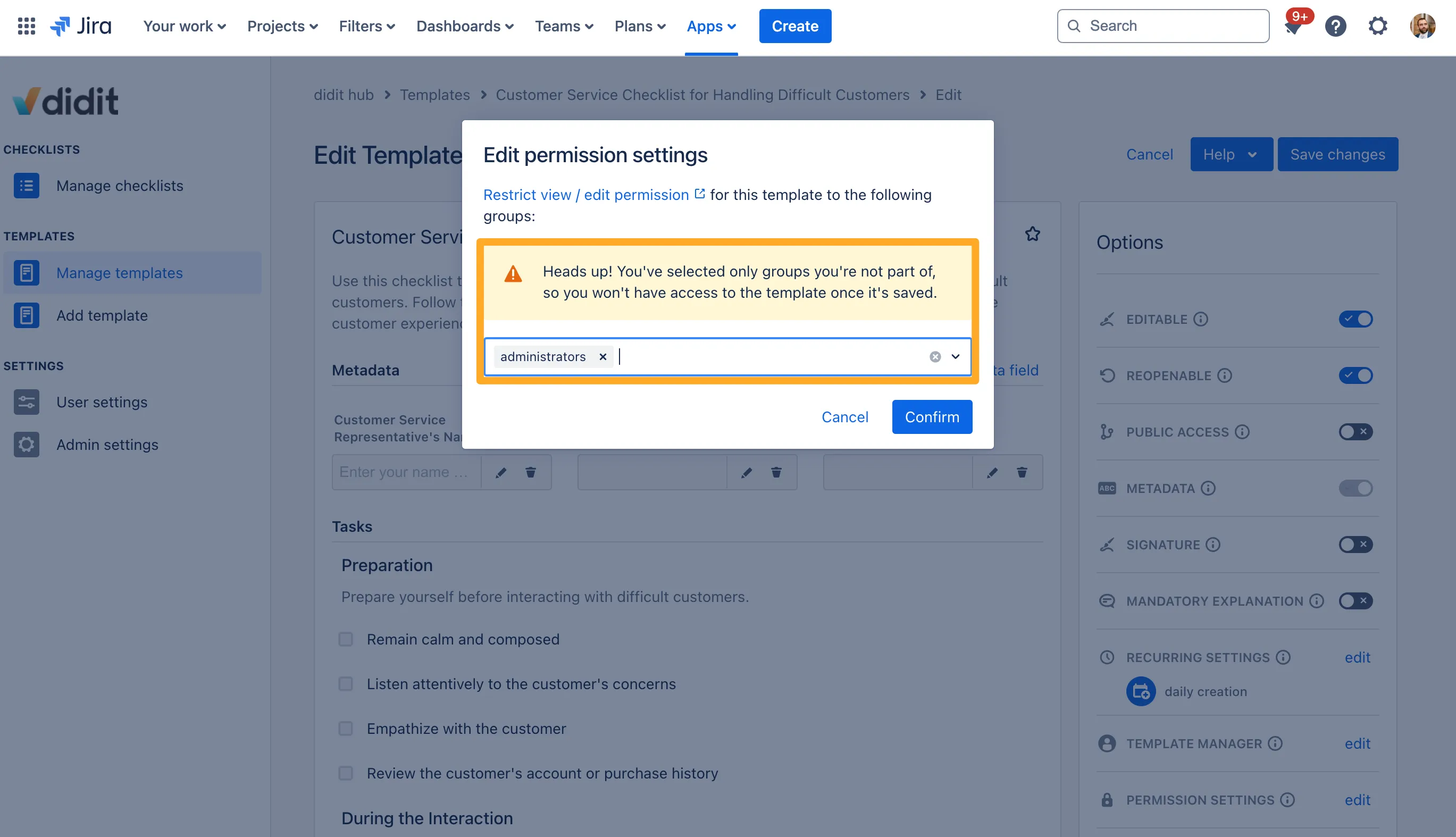
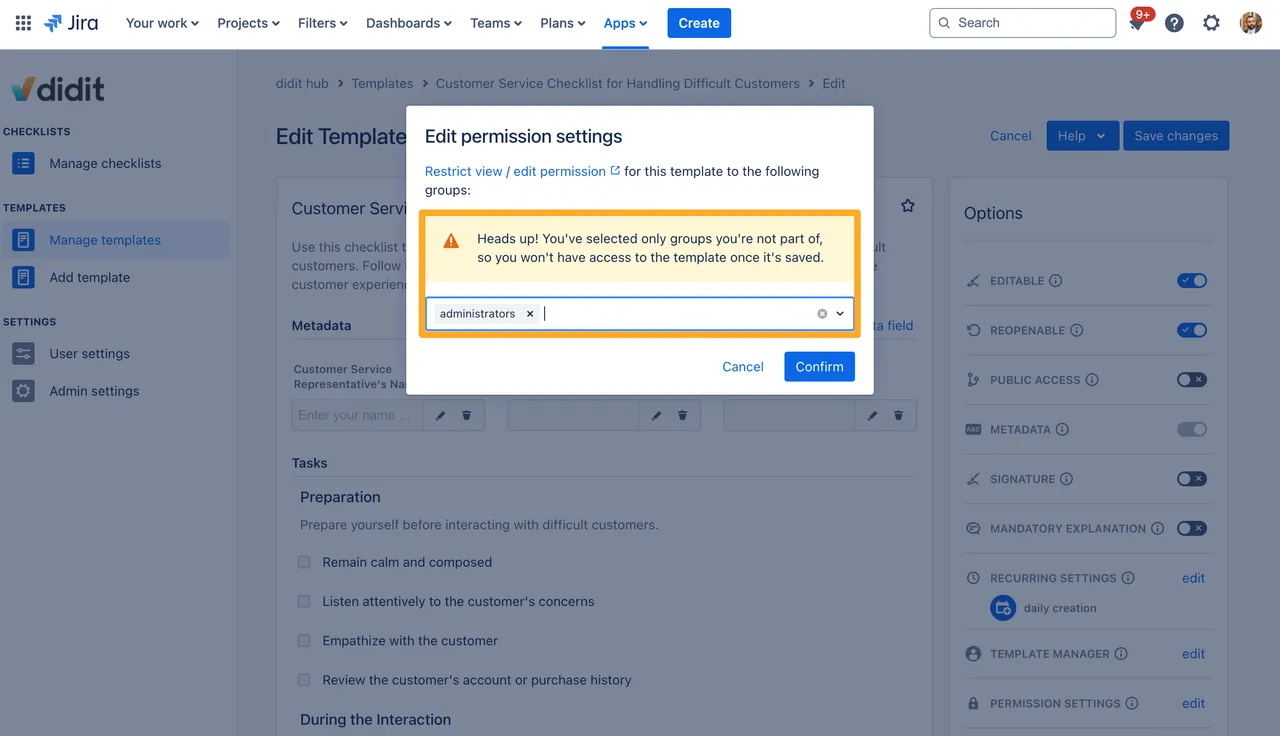
Public access vs. restricted permissions
This alert highlights a conflict due to the active “Public Access” feature. Despite any set permission restrictions, the template and its checklists remain publicly accessible via link or QR code. For a secure setup, please deactivate the “Public Access” toggle before setting permissions.
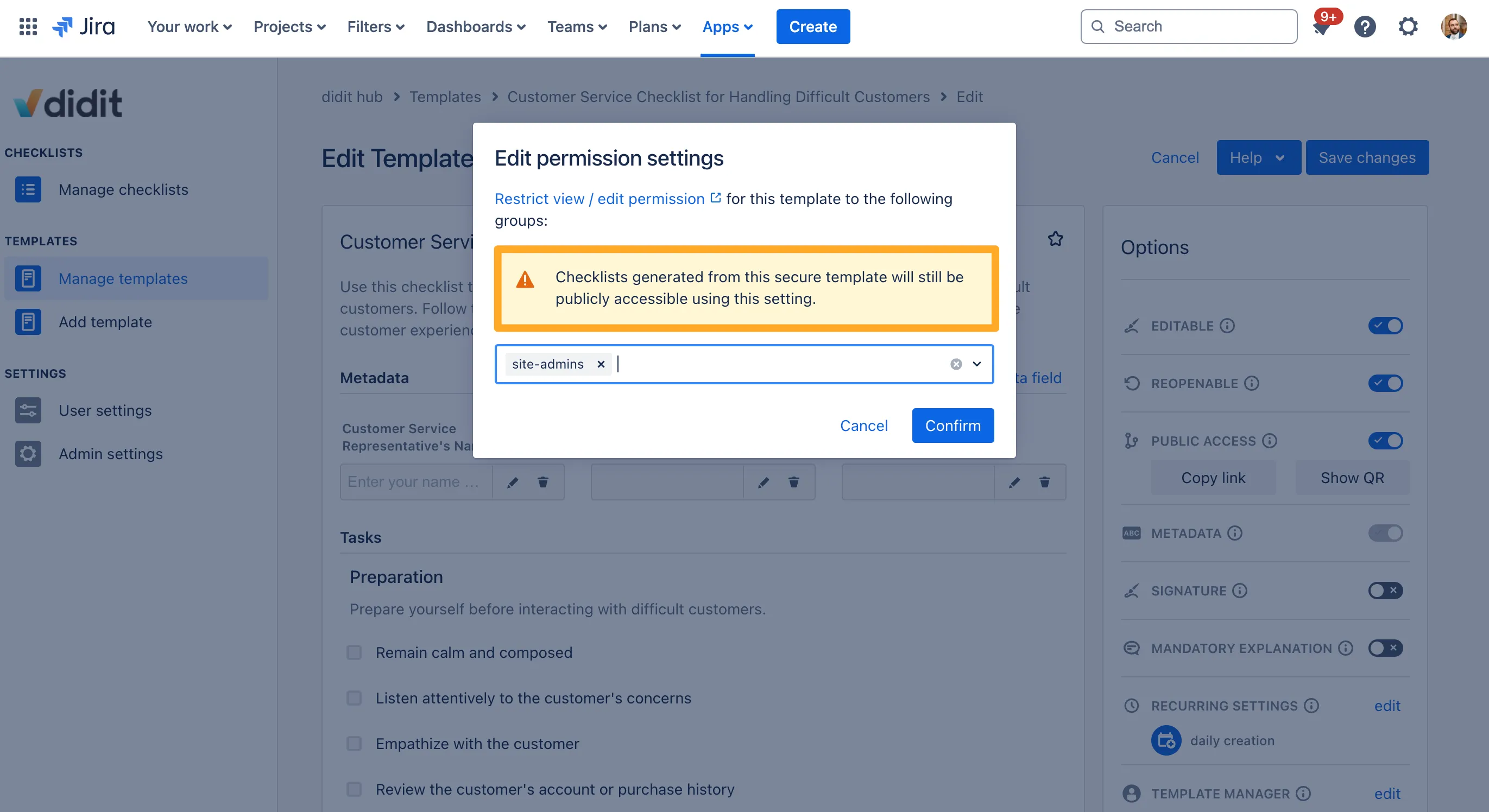
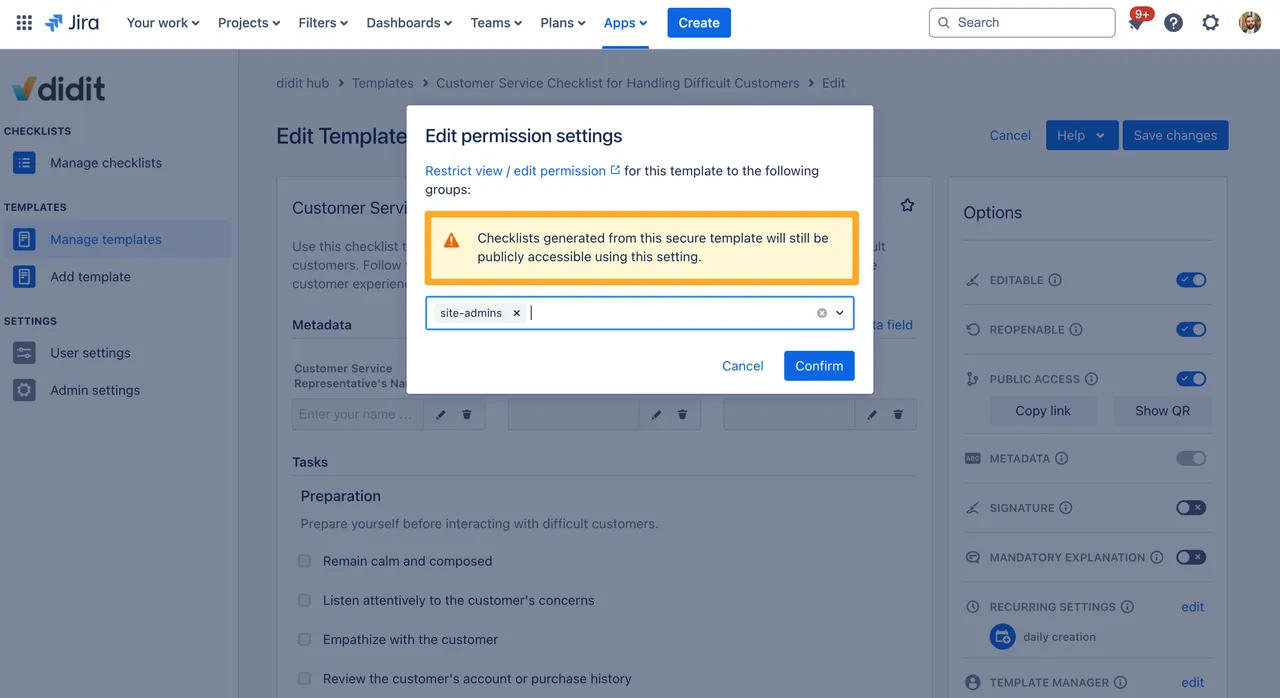
If you keep both the “Public Access” and group/user restrictions in place, users might not see the affected template / checklist in your Atlassian system, but will be able to see it through a public link. So you should be careful how you distribute the public links. You will also receive a notification if you later reactivate the “Public Access” while permissions remain restricted.
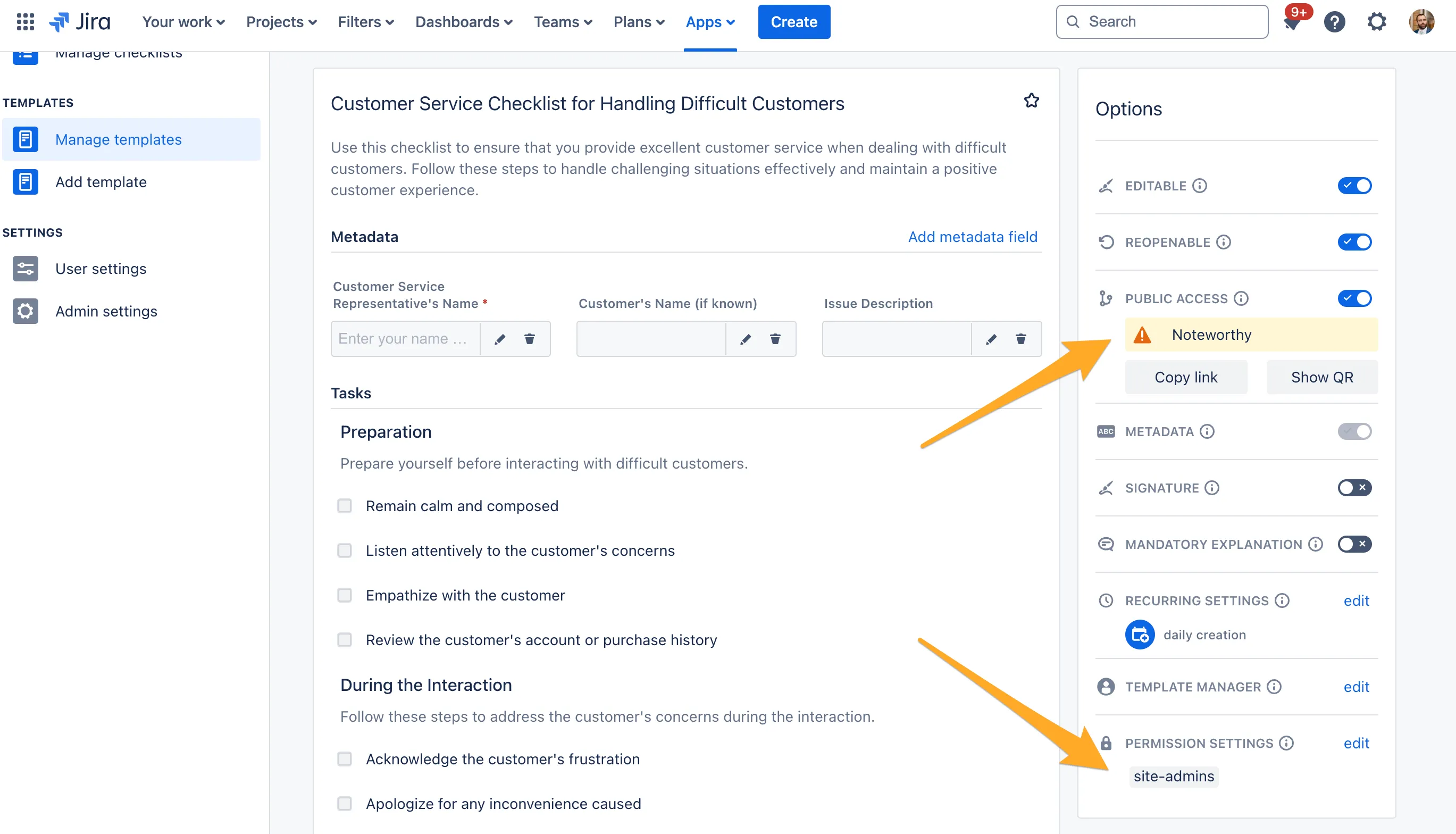
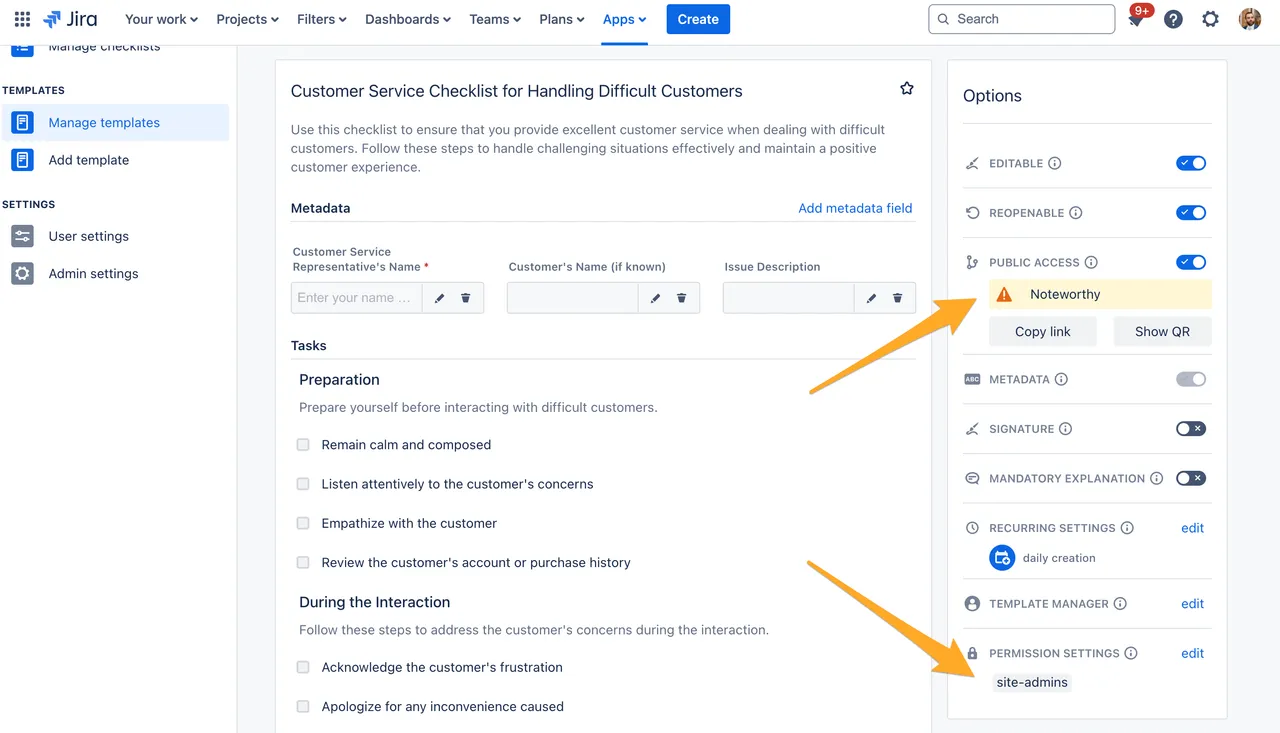
Public checklists
We do understand that public checklists are powerful. We can imagine that some customers will want to restrict access to checklists and templates while allowing external users like customers or partners to fill out individual checklists publicly. Please check if you have such a use case before using both settings simultaneously.
Good to know
Group count impact on content visibility
You may see this notification about your user account being associated with a high number of user groups in your Didit hub or the Confluence list macro. That is because you’re a member of more than 29 groups. When a user is part of 30 or more groups, there’s a possibility they might not see all content due to potential overlapping permissions or filtering. For an optimal user experience and to ensure full content visibility, we recommend reviewing and possibly consolidating your group memberships to 29 or fewer.
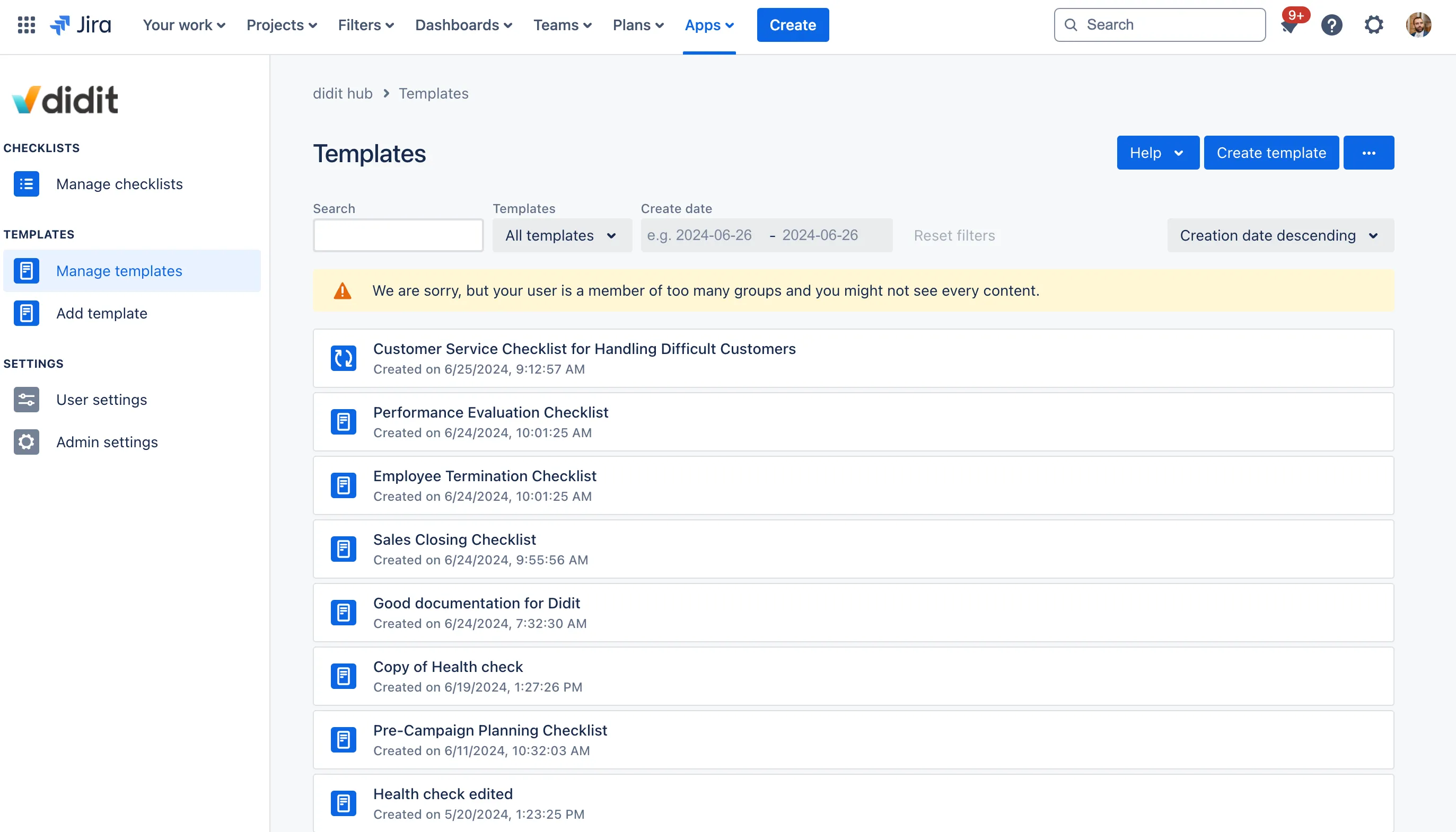
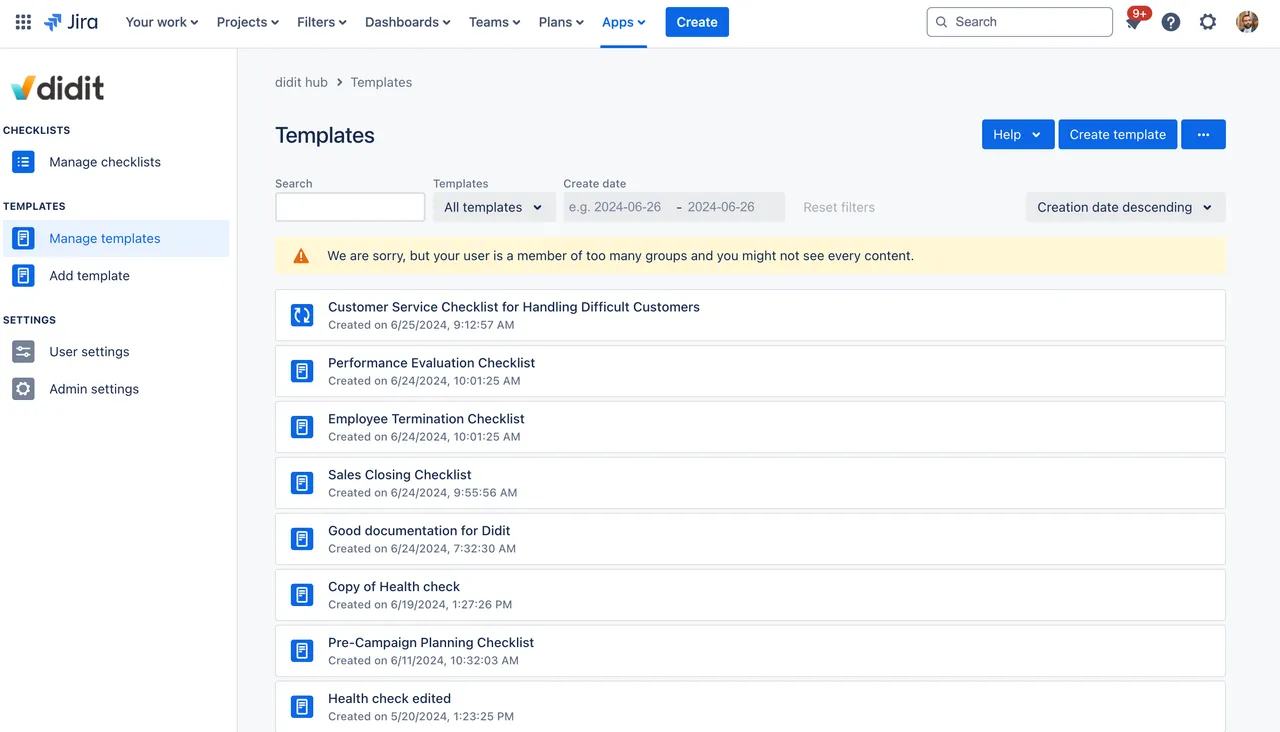
Default checklist templates in Jira
In Jira, you have the ability to set default, checklist templates for various issue types in your project. Whenever a new issue is created within the project, it will automatically generate a checklist based on the selected template. As you navigate to the dropdown menu for selecting a checklist template for an issue type, be attentive to template permissions.
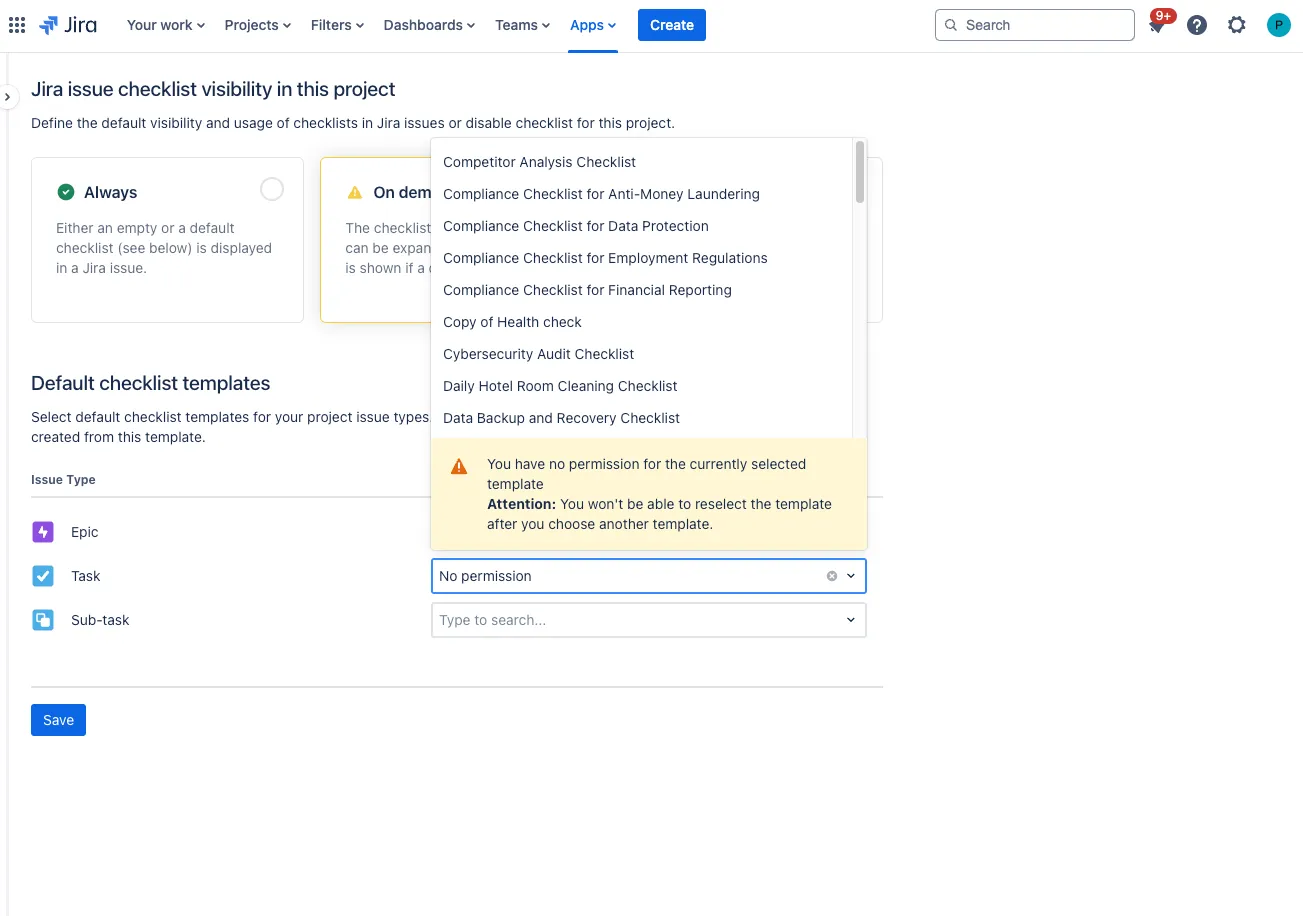
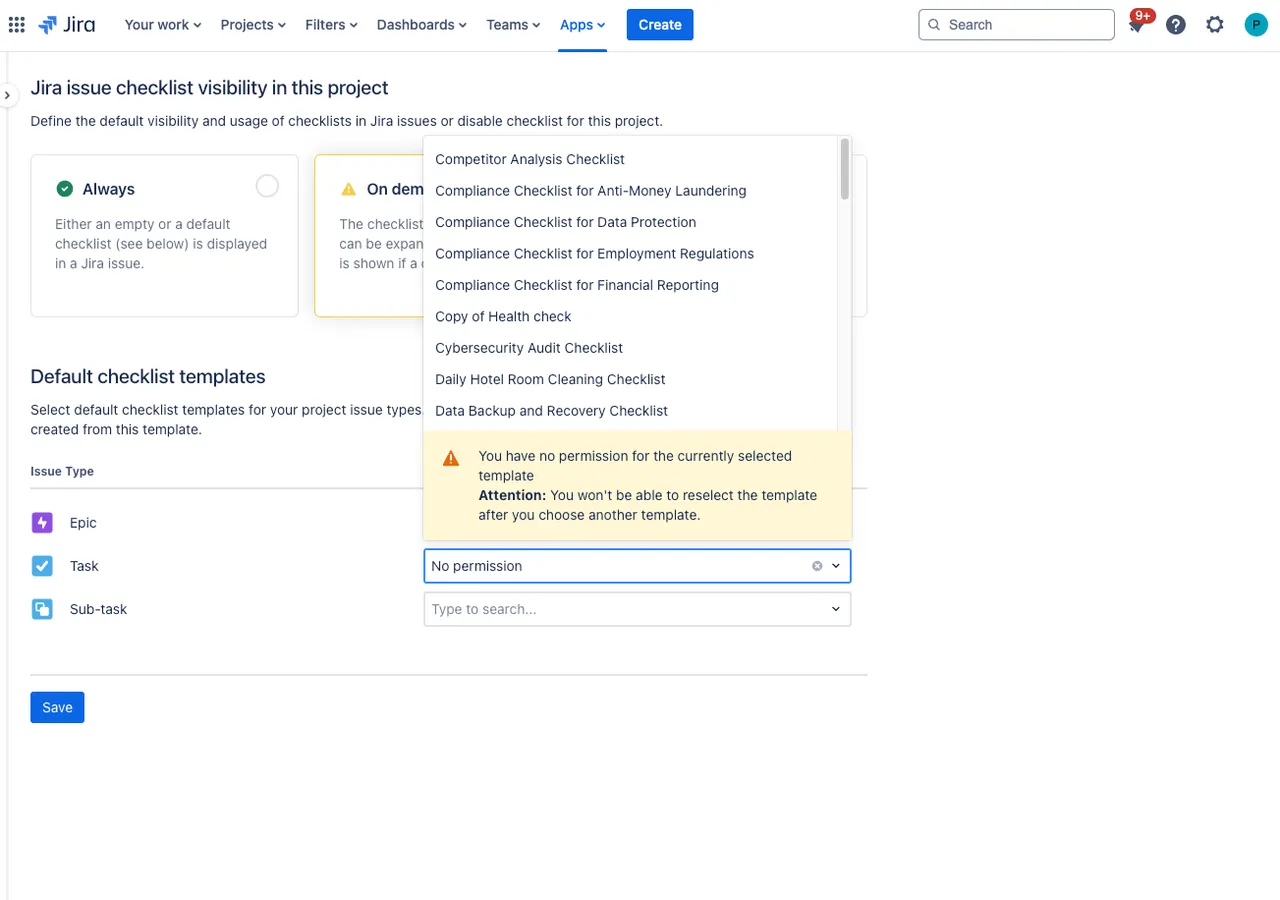
This message indicates that the chosen template is restricted and you lack the permissions to set it as the default. If you proceed to select a different template, be aware that you will lose the option to return to the restricted template later on. Before making a final decision, ensure you’ve evaluated your choices. If you need access to a restricted template, please consult with your Jira administrator.
Limited filter options
Due to the permissions settings the ability to filter checklists by metadata within Atlassian systems is no longer available. Please note, this feature is now exclusively accessible through our external web application.
Link to this page: https://seibert.biz/checkliststemplatepermissions